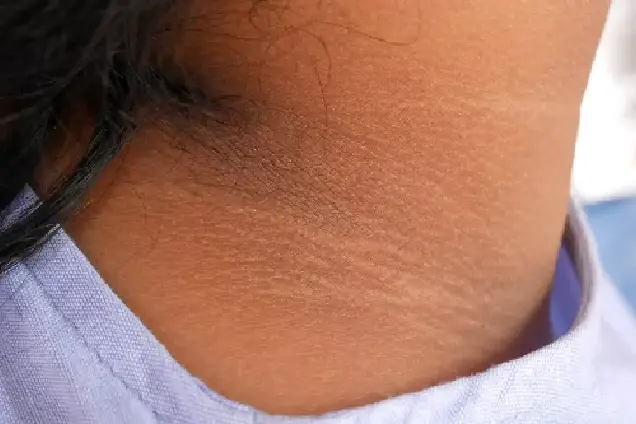
Acanthosis nigricans is a skin condition characterized by dark, velvety patches of skin that often appear in body folds, such as the neck, armpits, groin, and sometimes on the elbows or knees. The affected skin can thicken and have a slightly raised and rough texture.
Acanthosis nigricans itself is not harmful but can be a sign of an underlying health condition. Addressing the root cause and working with a healthcare provider for appropriate management and treatment can help improve skin appearance and overall health.